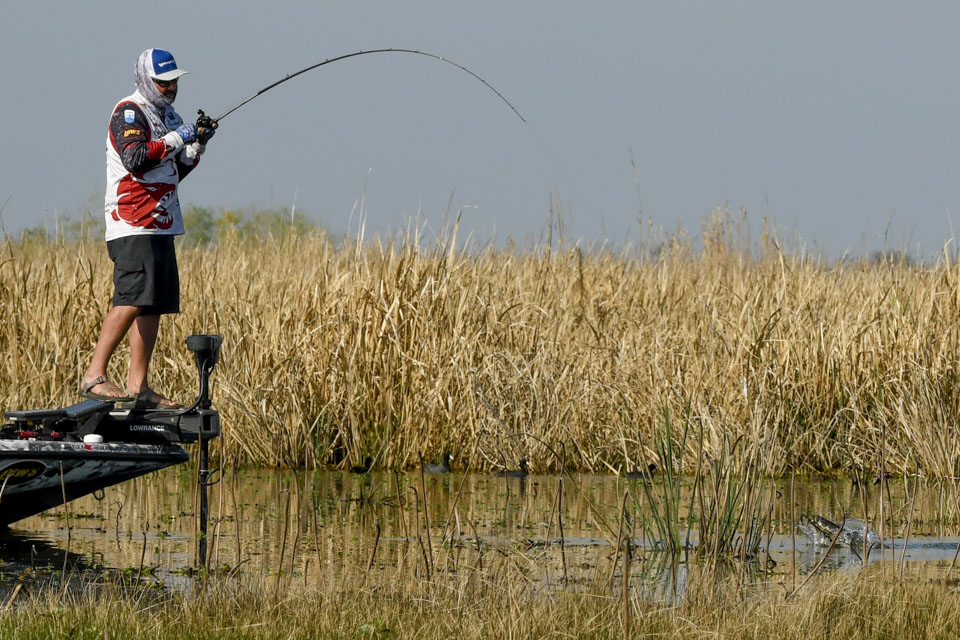
We’re rapidly approaching the prespawn period in the South, a time when I lock my flippin’ rod in my hands and go big bass hunting.
I’m talking about those southern areas all along the Gulf Coast, and of course, in Florida lakes like Okeechobee.
We’re starting to see more prespawn activity in the Deep South well into January. If the weather gets real warm, we may find fish spawning.
The transition has begun, and it’s a period when flipping mats in protected areas comes into play.
When bass start moving to those mats, your chances of catching a big female grow considerably. In fact, big females will group up over the next month, and that’s a time when I catch some of the biggest fish of the year.
The fish will move under these mats of grass or cattails in the afternoon after the sun has had a chance to warm them up. It’s a situation where you can duck hunt in the morning and bass fish in the afternoon.
Obviously, this is a time of year when you get big northern cold fronts. That’s when I look for old canals, dead-end channels and those northern banks that are sheltered from the cold northern winds and that retain heat from the sun.
However, my wintertime flippin’ tactics are a bit different from how I flip in the summer months.
For example, I typically use a lighter weight than I do when it’s warm. Rather than an ounce or 1 1/2 ounce sinker, I’ll opt for the lightest I can use and yet still penetrate the cover.
Just as I do in the summer, I’m trying to trigger a reaction bite, but when the water is cold, I don’t want to overly surprise the fish. I want more of a natural presentation.
I will use my rod for a controlled fall rather than my summertime tactic of allowing the bait to fall on a slack line.
The lighter sinker helps with that, but so does a bigger braid that drags more and slows the fall. These are the kinds of things that will help you get more bites.
Keep in mind that most of the bites are “pressure bites.” You may not see or feel the fish bite, but when you pick up you will feel resistance. That’s when you lean into them!
I prefer the Strike King Rodent because it penetrates well and doesn’t have a lot of unnecessary action. When the water is cold, I don’t want a lot of flappy parts on my lure, but I do want a bait with a profile.
You also must keep in mind how cold weather makes soft plastic lures less pliable. I use Strike King Tour Grade plastics which are the softest on the market, but even they get harder in cold weather.
Therefore, a hook adjustment is necessary. During the summer months, I use the Strike King Hack Attack hook. But during winter, I will scale down to a Gamakatsu Aaron Martens G-Power Heavy Cover Flipping Hook. It has a smaller diameter wire, so it slides through the plastic easier, but is rigid enough to not flex.
Because I’m primarily flipping and not pitching, I prefer my signature series Lew’s 7-6 rod over the 7-11 model. The 7-6 has a softer tip which makes it easier to flip lighter baits.
And finally, remember that the strike zone is small this year, and you should fish an area thoroughly when you get a bite. When the water is warm, I may make casts every 3 or 4 feet; when it’s cold I keep my flips no more than a foot apart. In cold weather, you have to basically hit that fish on the head to trigger a bite.
And, if using a lighter weight, you will tend to be more deliberate and thorough, as it can slow you down from the summer pace.
You will get more bites by being deliberate, and if fishing this time of year, chances are good that you will find a big ol’ girl lurking under one of those mats.





